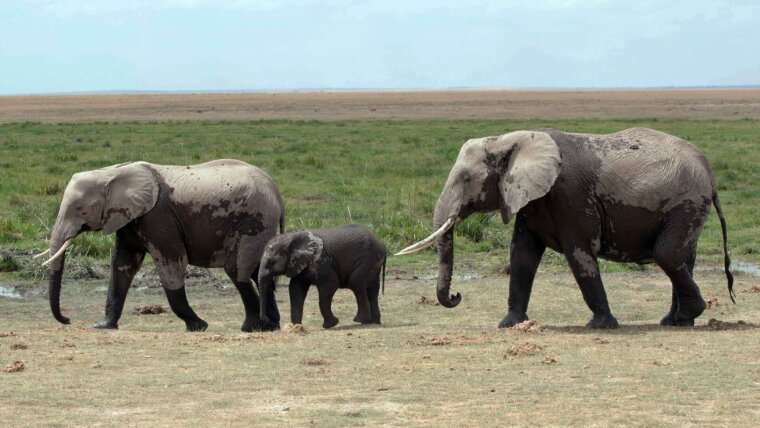
- Research
Published: | By: Kati Kietzmann
Whether an animal is flying, running or swimming, its traveling speed is limited by how effectively it sheds the excess heat generated by its muscles, according to a new study led by Alexander Dyer from the German Centre for Integrative Biodiversity Research (iDiv) and the Friedrich Schiller University Jena, published now in the open access journal “PLOS Biology”.
An animal’s capacity to travel is a crucial part of its survival and dictates where – and how far – it can migrate, find food and mates, and spread into new territories. This becomes even more challenging in a human-dominated world characterized by increasingly fragmented habitats and limited food and water resources under climate change.
Relationship between animal size and traveling speed
Alexander Dyer and his colleagues developed a model to look at the relationship between animal size and traveling speed, using data from 532 species. While larger animals should be able to travel faster due to their longer wings, legs or tails, the researchers found it is particularly the medium-sized animals that typically have the fastest sustained speeds. The researchers attribute this to the fact that larger animals require more time to dissipate the heat that their muscles produce while moving, they have to travel more slowly to avoid overheating. They conclude that any animal’s traveling speed can be jointly explained by how efficiently it uses energy and sheds heat.
“The new study provides a way to understand animal movement capacities across species and can be used to estimate any animal’s traveling speed based on its size”, says first author Dyer, doctoral researcher at iDiv and Friedrich Schiller University Jena. “For example, this approach can be applied to predict whether an animal might be able to move between habitats fragmented by human development, even when the details of its biology are unknown”. Last author Dr Myriam Hirt from iDiv and the University of Jena adds: “We anticipate that large animals are potentially more susceptible to the effects of habitat fragmentation in a warming climate than previously anticipated and therefore more prone to extinction. But this needs further investigation.”
This research was financed inter alia by the Deutsche Forschungsgemeinschaft (DFG; FZT-118 as well as research unit DynaCom, FOR 2716) and the Open Access Publication Fund of the Thüringer Universitäts- und Landesbibliothek Jena.
Original publication:
Alexander Dyer, Ulrich Brose, Emilio Berti, Benjamin Rosenbaum, Myriam R. Hirt: (2023). The travel speeds of large animals are limited by their heat-dissipation capacities. PLOS Biology, DOI: 10.1371/journal.pbio.3001820
http://journals.plos.org/plosbiology/article?id=10.1371/journal.pbio.3001820External link
Puschstraße 4
04103 Leipzig Google Maps site planExternal link